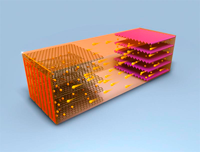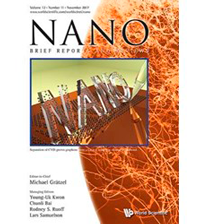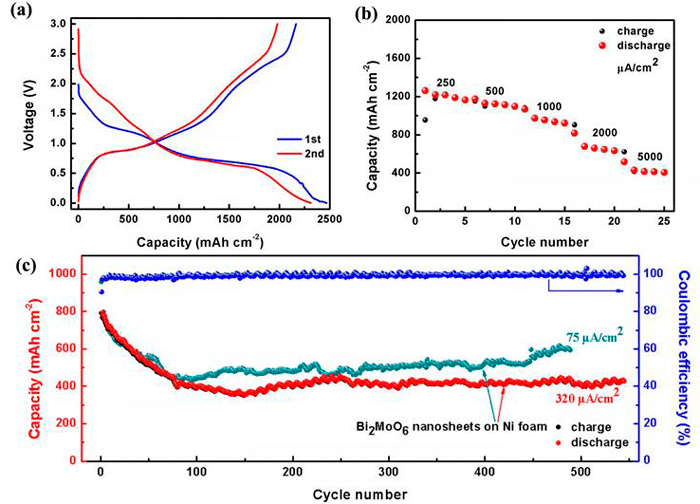Electronics News
Archive : 2 July 2018 год
 A self-heating battery has been created by a team of Penn State engineers to combat the issue surrounding climate restrictions, rapid recharging and electric vehicles (EV).
A self-heating battery has been created by a team of Penn State engineers to combat the issue surrounding climate restrictions, rapid recharging and electric vehicles (EV).
"EVs are popular on the west coast because the weather is conducive," explains assistant research professor, Xiao-Guang Yang of Penn State. "Once you move them to the east coast or Canada, then there is a tremendous issue. We demonstrated that the batteries can be rapidly charged independently of outside temperature."
When owners can recharge car batteries in 15 minutes at a charging station, EV refueling becomes nearly equivalent to gasoline refueling in the time it takes. Assuming that charging stations are liberally placed, drivers can lose their ‘range anxiety’ and drive long distances without worries.
Previously, the researchers developed a battery that could self-heat to avoid below-freezing power drain. Now, the same principle is being applied to batteries to allow 15-minute rapid charging at all temperatures, even as low as minus 45 degrees F.
The self-heating battery uses a thin nickel foil with one end attached to the negative terminal and the other extending outside the cell to create a third terminal. A temperature sensor attached to a switch causes electrons to flow through the nickel foil to complete the circuit when the temperature is below room temperature. This, the researchers say, rapidly heats up the nickel foil through resistance heating and warms the inside of the battery.
Once the battery's internal temperature is above room temperature, the switch turns opens and the electric current flows into the battery to quickly charge it.
In the results of their prototype testing, the researchers say that the self-heating battery withstood 4,500 cycles of 15-minute charging at 32 degrees F with only a 20% capacity loss. This provides approximately 280,000 miles of driving and a lifetime of 12.5 years.
A conventional battery tested under the same conditions lost 20% capacity in 50 charging cycles, the researchers add.
Lithium-ion batteries degrade when rapidly charged under 50 degrees F because, rather than the lithium-ions smoothly integrating with the carbon anodes, the lithium deposits in spikes on the anode surface. This lithium plating reduces cell capacity, but also can cause electrical spikes and unsafe battery conditions. Currently, long, slow charging is the only way to avoid lithium plating under 50 degrees F, the team say.
Batteries heated above the lithium plating threshold, whether by ambient temperature or by internal heating, will not exhibit lithium plating and will not lose capacity.
The researchers believe this charging method will also “allow manufacturers to use smaller batteries that are lighter and also safer in a vehicle”.
Author
Bethan Grylls
Source: www.newelectronics.co.uk
 The effect of hierarchical Bi2MoO6 nanosheet arrays growing on 3D Ni foam synthesised by one-step template-free route has been investigated by a team form Northeastern University.
The effect of hierarchical Bi2MoO6 nanosheet arrays growing on 3D Ni foam synthesised by one-step template-free route has been investigated by a team form Northeastern University.
According to Northeasten, the obtained BNAs used directly as binder-free integrated electrode for Li-ion batteries (LIBs) exhibits a “super high” reversible discharge capacity of 2311.7 μAh/cm2, and an “excellent” cycle stability.
Commercial LIBs mainly use graphite as the anode material. The problem is graphite can hardly provide the high capacity and high energy density necessary to satisfy the demand required for high power application of the next-generation LIBs due to its low theoretical specific capacity.
In terms of their high capacity, lots of metal oxides have attracted great interest in recent years. However, most metal oxides have low conductivity, high desertion voltage and structural instability, which result in poor rate capability, low power density and poor cycling stability. These shortcomings limit the application of metal oxides as anode materials for LIBs.
Among the numerous metal oxides, Bi2MoO6 with high theoretical capacity (791 mAh/g) and low desertion voltage (<1.0 V) has been widely studied for its excellent photoelectric properties, but, there are few reports on the nanostructure Bi2MoO6 as anode material for LIBs, not to mention the Bi2MoO6 integrated electrode.
Thereafter, developing an effective strategy to prepare the Bi2MoO6 integrated electrode and then exploring their electrochemical performance toward lithium is of great importance, Northern says.
To tackle the issue of low intrinsic conductivity, inferior cycling stability for Bi2MoO6 as anode material, the researchers proclaim an effective strategy to the synthesis of hierarchical Bi2MoO6 nanosheet arrays (BNAs) on the 3D Ni foam by one-step template-free hydrothermal method.
The team says they found that BNAs-integrated electrodes exhibit excellent electrochemical properties (a super high reversible discharge capacity of 2311.7 μAh/cm2, more than 500 times of cyclic stability), when used as the anode electrode for LIBs.
The hope is that this work will pave the way for better performing LIBs with metal oxides as the anode material. The team believe it can improve the cycle stability and capacity of lithium-ion battery and expect it to be used in portable electronic devices in the future.

Fig. (a) are the galvanostatic charge-discharge curves of BNAs integrated electrode at a current density of 25 μA cm-2 . The 1st, 2nd discharge capacities of BNAs integrated electrode are 2471.5, 2311.7 μAh·cm-2 (1861.8, 1741.4 mAh g-1).
Fig. (b) reveals the rate capability of BNAs integrated electrode at current densities of 250, 500, 1000, 2000, 5000 μAh·cm-2 respectively. The discharge capacities are 1219, 1128, 972, 678, 430 μAh·cm-2(918.2, 849.7, 732.2, 510.7, 323.9 mAh g-1), respectively.
Fig. (c) shows the cycling stability of BNAs integrated electrodes. Reversible capacity of BNAs integrated electrodes can maintain a capacity of 410 μAh·cm-2 (308.8 mAh g-1, at a current density of 320 μAh·cm-2) after 600 cycles. When the current density was 75 μAh·cm-2, the electrode exhibits a high capacity of 600 μAh·cm-2 (451.9 mAh g-1) after 500 cycles. The above results show that the integration of active material and current collector can greatly improve the capacity, rate ability and cyclical stability of the battery.
Author
Bethan Grylls
Source: www.newelectronics.co.uk
